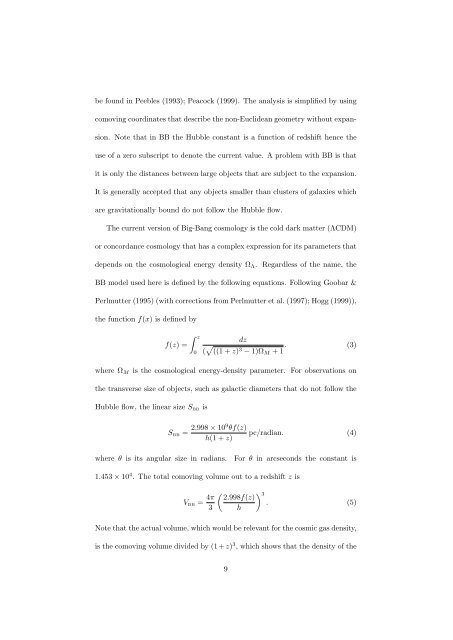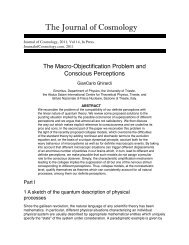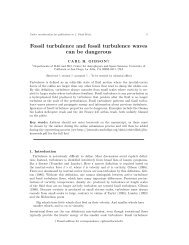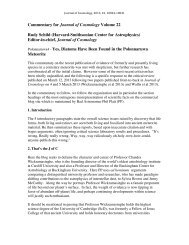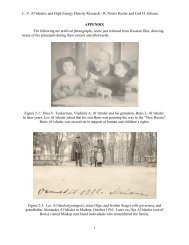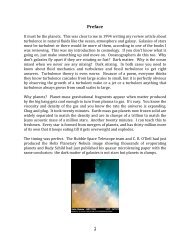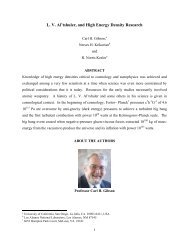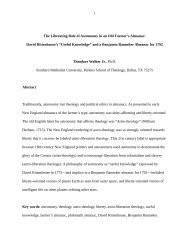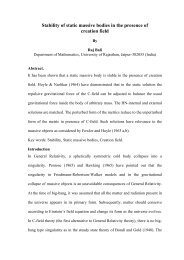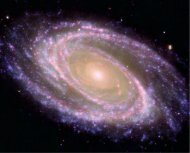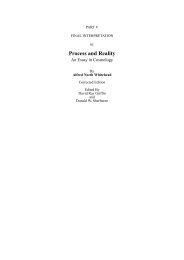Observational Evidence Favors a Static Universe - Journal of ...
Observational Evidence Favors a Static Universe - Journal of ...
Observational Evidence Favors a Static Universe - Journal of ...
Create successful ePaper yourself
Turn your PDF publications into a flip-book with our unique Google optimized e-Paper software.
e found in Peebles (1993); Peacock (1999). The analysis is simplified by using<br />
comoving coordinates that describe the non-Euclidean geometry without expan-<br />
sion. Note that in BB the Hubble constant is a function <strong>of</strong> redshift hence the<br />
use <strong>of</strong> a zero subscript to denote the current value. A problem with BB is that<br />
it is only the distances between large objects that are subject to the expansion.<br />
It is generally accepted that any objects smaller than clusters <strong>of</strong> galaxies which<br />
are gravitationally bound do not follow the Hubble flow.<br />
The current version <strong>of</strong> Big-Bang cosmology is the cold dark matter (ΛCDM)<br />
or concordance cosmology that has a complex expression for its parameters that<br />
depends on the cosmological energy density ΩΛ. Regardless <strong>of</strong> the name, the<br />
BB model used here is defined by the following equations. Following Goobar &<br />
Perlmutter (1995) (with corrections from Perlmutter et al. (1997); Hogg (1999)),<br />
the function f(x) is defined by<br />
f(z) =<br />
∫ z<br />
0<br />
dz<br />
( √ ((1 + z) 3 . (3)<br />
− 1)ΩM + 1<br />
where ΩM is the cosmological energy-density parameter. For observations on<br />
the transverse size <strong>of</strong> objects, such as galactic diameters that do not follow the<br />
Hubble flow, the linear size S BB is<br />
S BB = 2.998 × 109 θf(z)<br />
h(1 + z)<br />
pc/radian. (4)<br />
where θ is its angular size in radians. For θ in arcseconds the constant is<br />
1.453 × 10 4 . The total comoving volume out to a redshift z is<br />
V BB = 4π<br />
3<br />
( 2.998f(z)<br />
h<br />
) 3<br />
. (5)<br />
Note that the actual volume, which would be relevant for the cosmic gas density,<br />
is the comoving volume divided by (1 + z) 3 , which shows that the density <strong>of</strong> the<br />
9


